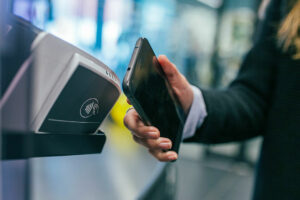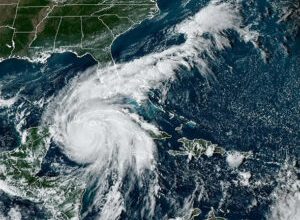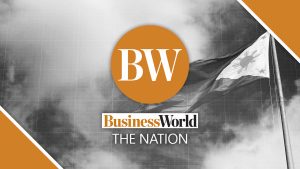The Philippines on its way to becoming a cash-lite economy

SPURRED by rapid cash-to-noncash conversion despite macroeconomic headwinds, global payments revenues are expected to rise year on year by nearly 9.5% in 2022, riding a positive trajectory for the next decade to reach $3.3 trillion by 2031. These findings were released in our recent Global Payments 2022: The New Growth Game report. As economies return to business as usual, Asia Pacific’s payments sector is also growing steadily, bolstered by increased competition, higher rates of “platformization,” innovative disruptions, and increased involvement from regulators, governments, and central banks. Non-cash payments transaction volume has increased 28% from 2016 to 2021 and is expected to grow 17% in the next decade.
The Philippines is amongst the Southeast Asian markets that witnessed strong shifts towards non-cash payments, with an overall 30% growth in transaction volume from 2016 to 2021. This volume of non-cash payments is expected to increase by more than three times by 2031. The country also saw a healthy growth of 9% in card transactions (from 2016 to 2021) and is expected to grow 10% in the next decade.
These findings strongly corroborate data released by the country’s central bank, Bangko Sentral ng Pilipinas (BSP), which stated that the share of digital payments rose to 30.3% in 2021, representing 44.1% of total retail payments in 2021, up from the 26.8% recorded a year earlier.
Aimed at transforming the country into a cash-lite economy, whilst driving greater financial inclusion, the BSP aims to convert 50% of total retail transactions in the country to electronic channels by 2023. It also aims to increase the number of Filipino adults with bank accounts to 70% by 2023.
FAVORABLE REGULATIONSTo meet these targets, the country is seeing increased focus on digital payment innovations through enabling policies, regulations, and collaborative partnerships with national payment system stakeholders. One of the key pillars of the BSP’s Digital Payments Transformation 2020-2023 roadmap is to develop digital payment streams to increase wider acceptance and use amongst the government, individuals, and businesses.
The Philippine government currently accounts for the largest volume of digitized payments in the country, having embraced the channel to promote the use of bank accounts for salary and social security disbursements. It actively encourages the private sector to use transaction accounts such as bank accounts, e-wallets, and e-payment systems such as PESONet for paying wages and other monetary benefits. PESONet transactions have in fact risen by 48.1% from January to June 2022. The government is also increasingly encouraging the adoption of services such as EGov Pay and InstaPay for the payment of taxes, permits, and fees.
Businesses in the Philippines, while slower with digital adoption, are benefitting from greater interoperability within the country’s previously fragmented QR-driven payment services sector. The introduction of the Philippines’ national QR Code standard, QR PH in 2019 for person-to-person (P2P) payments initially catered primarily to payments and remittances in the informal sector. This was followed by the QR PH Person-to-Merchant (P2M) payment facility in October 2021 to enable interoperable digital payments between customers and merchants even across different financial service providers in the country. As of April 2022, over 473,000 merchant outlets nationwide (almost double from the previous month) and 17 financial institutions had adopted the P2M facility. In 2023, the BSP and the Philippine Payments Management, Inc. (PPMI) will roll out more initiatives to facilitate bill payments and direct debits.
Underpinned by stronger digital governance standards, the country is also seeing investments in its digital payments infrastructure including the integration of the Philippine Identification System (PhilSys) with electronic Know Your Customer (e-KYC) features, and the adoption of open-banking frameworks.
ZERO FEES ON MICRO TRANSACTIONSAimed at increasing QR PH usage amongst MSMEs and boosting cashless transactions within the country, the BSP has done away with fees on payments to merchants using QR PH P2M. This move is making payments to micro enterprises such as sari-sari (sundry) and wet market stores more appealing while supporting remittances between individuals for small-value transactions such as jeepney or tricycle fares.
QR PH P2M uses InstaPay, one of the two electronic payments facilities under the central bank’s National Retail Payment System (NRPS), for its transactions. At present banks and electronic money institutions (EMIs) may or may not charge reasonable fees to merchants using the QR PH P2M facility. Seeing as it is cheaper than using a point-of-sales (POS) terminal, greater numbers of micro-merchants are being encouraged to open transaction accounts with banks and EMIs.
The interoperability of the QR PH facility, coupled with the zero-fee policy is also driving stiff competition amongst the country’s top two e-wallet players. GCash has over 139,000 merchants with 60 million registered users in May 2022, while PayMaya has more than 116,000 merchant partners and over 47 million registered users as of March 2022.
E-WALLET PLAYERSBoth payment players in the Philippines are offering lending services as alternative sources of revenue. In April this year, just six months after it was granted its digital banking license by the BSP, PayMaya launched Maya Bank to include online banking services alongside e-wallet, cryptocurrency trading, and micro-investments. It gained one million customers within five months of its launch.
GCash said it disbursed more than P40 billion worth of loans as of September 2022 and had one million active borrowers as of end June. It also has a range of lending products, including GCredit, a revolving mobile credit line to pay for goods and services; GLoan, which provides zero-collateral, pre-approved access to up to P25,000 cash loans instantly, and GGives, a Buy Now, Pay Later (BNPL) flexi-payment solution with low interest rates. It plans to launch GStocks in partnership with the Philippine Stock Exchange (PSE) and brokerage AB Capital Securities.
These trends mimic what is happening in other Asian countries. India’s e-wallet unicorn, BharatPe, leveraged the zero MDR (merchant discount rates) policy to expand its business to include loyalty cards and lending services for merchants. Within four years, it on-boarded 10 million merchants in over 400 cities across India, reaching $20 billion in annualized total payments volume. Thailand’s True Money launched its TrueMoney payroll facility in Indonesia for businesses with unbanked employees to have access to online payroll.
All signs indicate that the payments sector in the Philippines is ready to be catalyzed. And with the country set to experience the highest consumption growth in ASEAN by 2030, driven by food and beverage (F&B), which will account for up to 40% of consumption, opportunities for growth and innovation in the payments sector are rife. Backed by a progressive government that is leading by example to transform its digital payments sector and drive financial inclusion for all sectors of society, now is the time for businesses to ramp up adoption, and take digital payments in the Philippines to the next level.
Sumit Kumar is the managing director and partner at the Boston Consulting Group. Kanchanat U-Chukanokkun is the lead knowledge analyst at the Boston Consulting Group.




